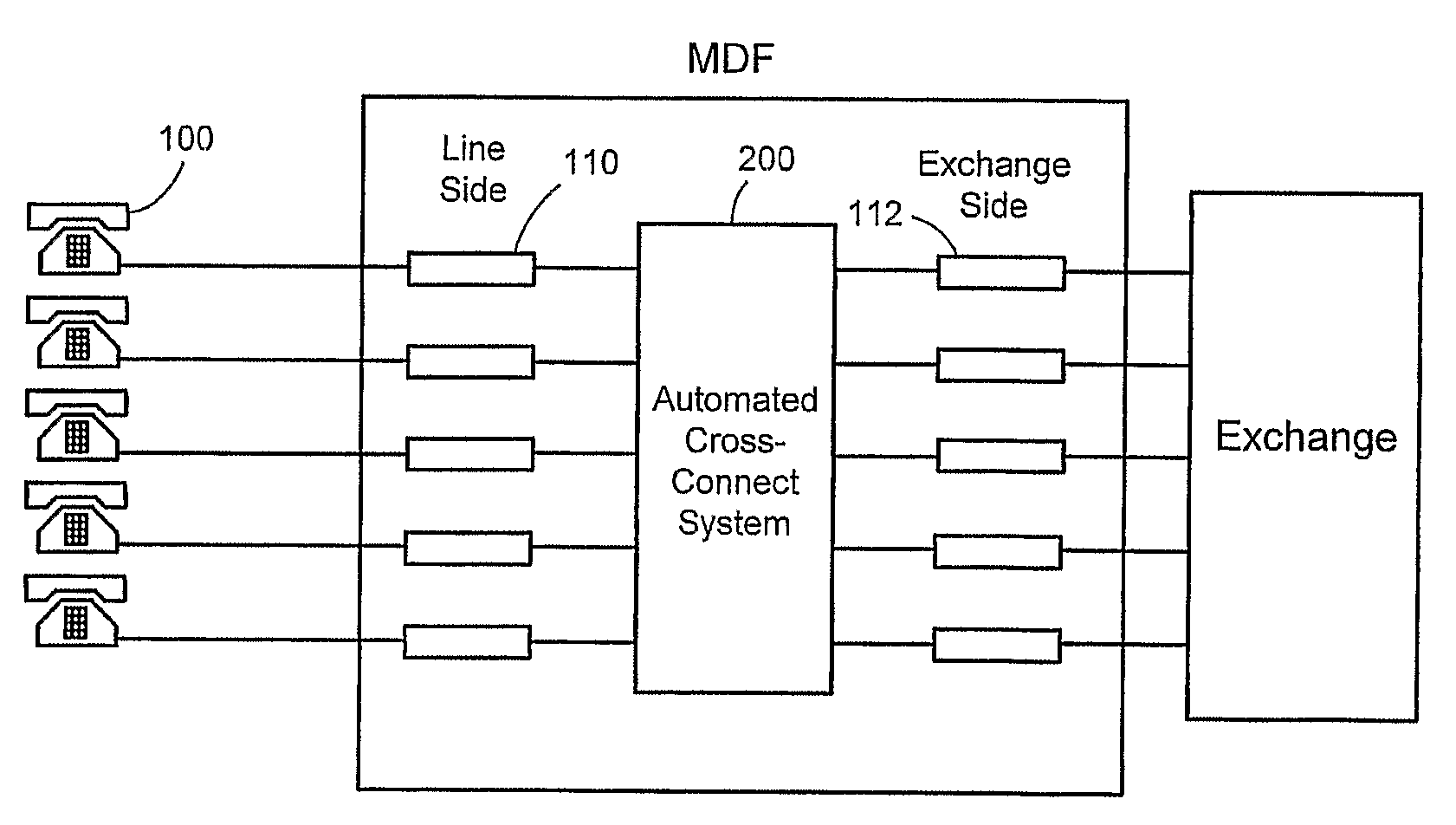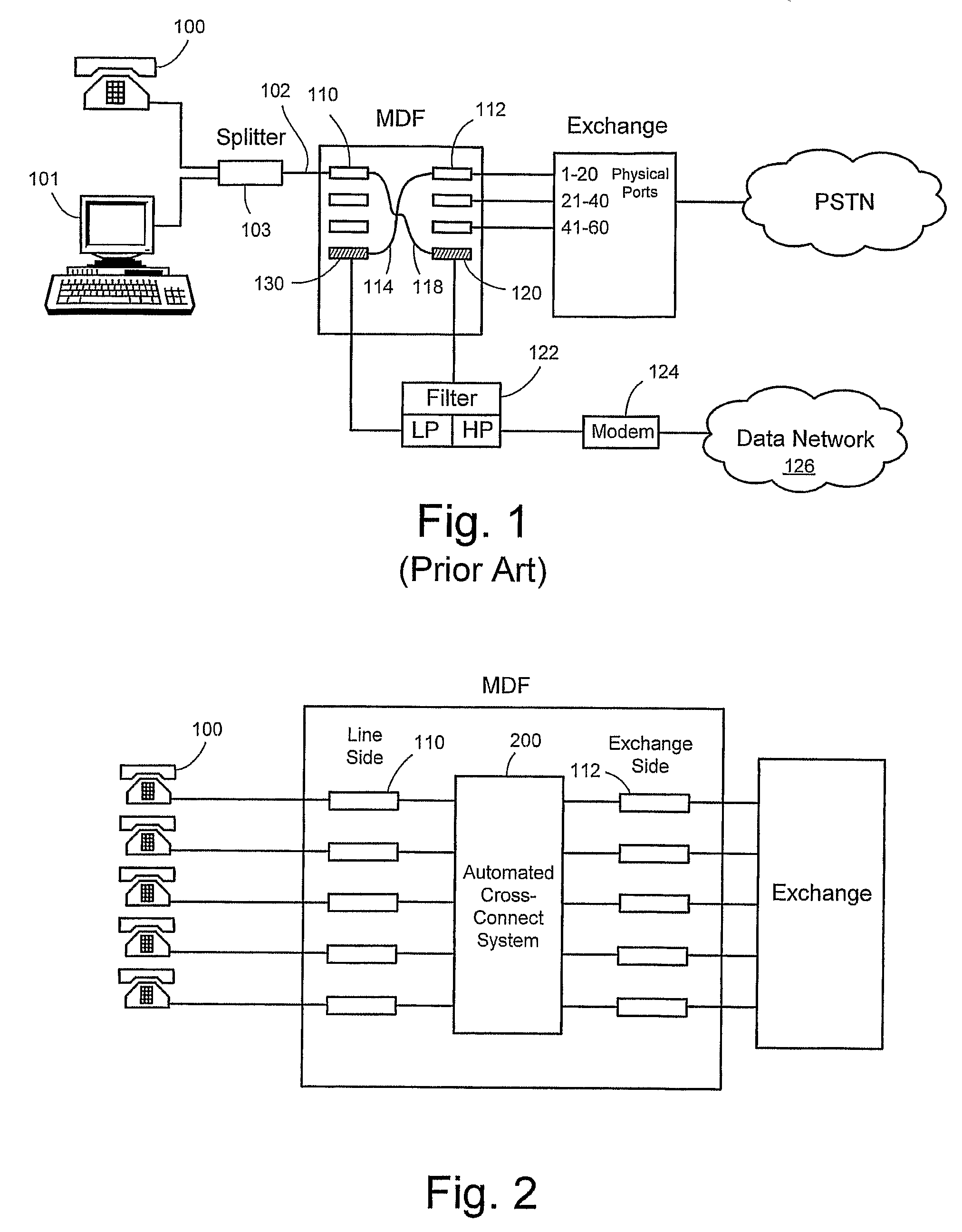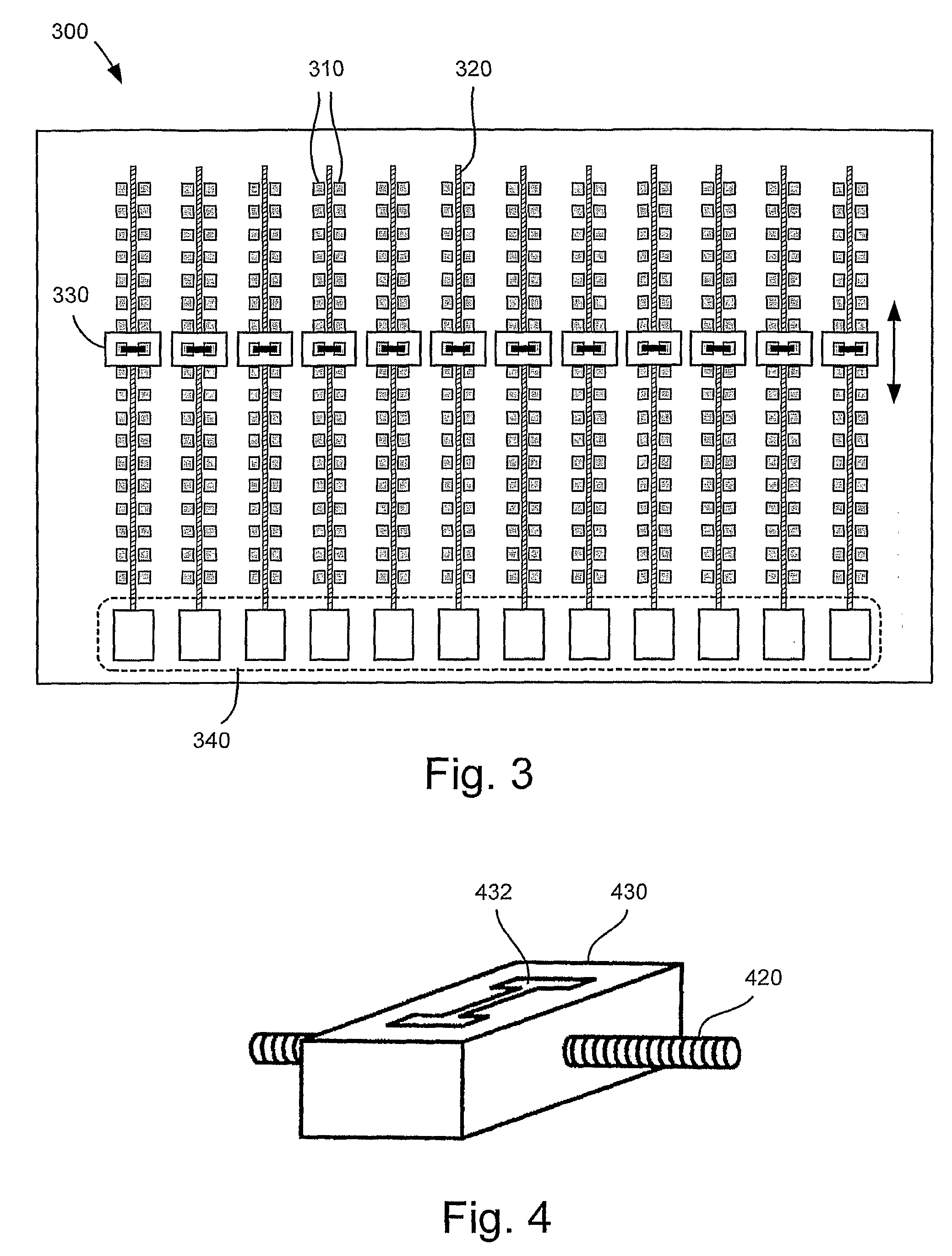Method and System for Scanning and Detecting Metallic Cross-Connects
a technology of metallic cross-connects and scanning methods, applied in the field of telecommunication networks, can solve the problems of affecting the service life of subscribers, the inability to accurately detect which subscriber lines, and the natural tendency of manual processes to be prone to errors
- Summary
- Abstract
- Description
- Claims
- Application Information
AI Technical Summary
Benefits of technology
Problems solved by technology
Method used
Image
Examples
Embodiment Construction
[0024]The scanning, verification and accurate documentation of the current jumper wire and line status in telecom networks is important to operators for a number of other reasons besides routine network optimisation and maintenance. By way of example, an important application for line connection data is to assist in the installation of new equipment such as e.g. an automated cross-connect system installed within a central office MDF. The correct prior knowledge of the line status allows for the possibility of non-intrusive installations, i.e. where the current cross-connects of the lines are maintained after installation of the equipment. An effective technique for quickly performing automated scanning and verification of the jumper configuration within an MDF is to connect the verification equipment directly to the connector blocks and scan the entire set of blocks. This type of connection arrangement is already used in some automated cross-connect systems such as the Nexa™ Automat...
PUM
 Login to View More
Login to View More Abstract
Description
Claims
Application Information
 Login to View More
Login to View More - R&D
- Intellectual Property
- Life Sciences
- Materials
- Tech Scout
- Unparalleled Data Quality
- Higher Quality Content
- 60% Fewer Hallucinations
Browse by: Latest US Patents, China's latest patents, Technical Efficacy Thesaurus, Application Domain, Technology Topic, Popular Technical Reports.
© 2025 PatSnap. All rights reserved.Legal|Privacy policy|Modern Slavery Act Transparency Statement|Sitemap|About US| Contact US: help@patsnap.com



